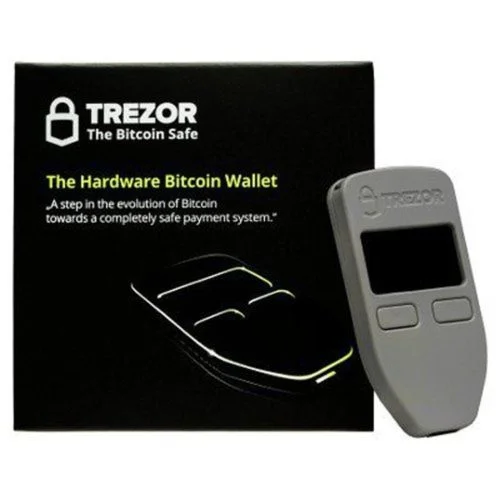Just as you navigate the complex world of cryptocurrency, understanding the key factors that influence altcoin prices can empower your investment decisions. In this in-depth review, you’ll uncover the fundamental components that drive market fluctuations—from technological advancements and regulatory impacts to market sentiment and trading volumes. By grasping these elements, you can enhance your strategies and access a broader perspective on your altcoin investments. So, let’s look into the important factors that shape the dynamic landscape of altcoin pricing.
Key Takeaways:
- Market Sentiment: Altcoin prices are heavily influenced by investor enthusiasm and market perception, which can lead to significant price fluctuations.
- Technological Developments: Innovations and upgrades within the altcoin’s ecosystem play a vital role in determining its price, as advancements can enhance functionality and adoption.
- Regulatory Environment: Changes in laws and regulations regarding cryptocurrencies can impact altcoin values, affecting trading volumes and overall market stability.
Market Sentiment
A significant factor influencing altcoin prices is market sentiment, which reflects the overall attitude of investors toward a particular cryptocurrency. When traders are optimistic, you may see increased buying activity resulting in price surges. Conversely, negative sentiment can lead to panic selling, causing a swift decline in prices. Understanding market sentiment can help you make informed decisions about when to enter or exit your investments.
Investor Psychology
Along with market sentiment, investor psychology plays a pivotal role in price fluctuations. Emotional responses, such as fear or greed, can lead to irrational decisions. As you engage with the altcoin market, pay attention to how your emotions affect your trading strategies. A disciplined approach, focused on data rather than emotions, can help you navigate the highs and lows of the market effectively.
Social Media Influence
One of the most powerful forces driving market sentiment today is social media influence. Platforms like Twitter, Reddit, and Telegram can amplify news and rumors at lightning speed, leading to rapid shifts in price. Engaging with these communities allows you to gauge market sentiment, but it’s important to evaluate the accuracy of the information before acting on it.
Indeed, the social media landscape has become a double-edged sword for investors. While it can provide valuable insights into market trends and investor sentiment, it also harbors misinformation that can mislead you. Viral posts or tweets can create buying frenzies or panic sell-offs, making it crucial for you to critically assess the content you consume. Leveraging social media strategically can enhance your investment strategy, but always double-check facts from credible sources before making trading decisions.
Technological Developments
If you’re exploring the altcoin market, understanding the impact of technological developments is important. Innovations and enhancements can significantly shape the market dynamics, leading to fluctuations in altcoin prices. As you follow trends, look out for advancements that demonstrate a utility or improve the underlying protocol of a cryptocurrency, as these factors can entice investors and heighten interest.
Network Upgrades
For altcoins, network upgrades play a vital role in boosting functionality and security. These upgrades can enhance transaction speed, lower fees, and introduce new features, which might attract a broader user base. If executed successfully, such upgrades often lead to positive price movements as investors gain confidence in the longevity and adaptability of the coin.
New Use Cases
Technological advancements can also open the door to new use cases for altcoins. As the technology evolves, you may find innovative applications that extend beyond the initial purpose of the cryptocurrency, enabling it to solve real-world problems or tap into new markets. This versatility not only increases demand but also elevates the perceived value of the altcoin.
For instance, an altcoin initially designed for peer-to-peer payments may find new life in areas such as decentralized finance (DeFi) or supply chain management. As industries recognize the potential for altcoins to streamline processes or enhance security, you can expect increased interest from both developers and investors. Keep an eye on projects that are actively exploring and implementing innovative use cases, as these can be indicators of future price appreciation.
Regulatory Environment
All investors should be aware that the regulatory environment surrounding altcoins significantly influences their market prices. Regulatory bodies around the world are crafting policies that can either create opportunities or limit potential growth. For an overview of 7 Key factors that could impact cryptocurrency prices, understanding compliance measures is necessary for making informed investment decisions.
Global Regulations
With regulatory frameworks evolving globally, you must navigate various legal landscapes to understand how they impact altcoin prices. Different countries have unique approaches, with some adopting light-touch regulations while others impose strict guidelines. Staying informed about these regulations can be a valuable asset in your investment strategy.
Impact of Policies
About the impact of policies, the decisions made by governing bodies can lead to immediate price fluctuations in the altcoin market. When new regulations are announced, or existing ones are amended, reactions among investors may cause volatility. These policies can determine everything from trading capabilities to taxation, significantly altering market dynamics.
Regulations often dictate how altcoins can be traded, stored, or utilized, leaving a long-lasting impact on their prices. When governments implement supportive policies, it can boost investors’ confidence and drive up demand. Conversely, restrictive measures may lead to market uncertainty, causing you to reassess your strategies. Keeping an eye on these regulatory shifts is vital for positioning yourself wisely in the ever-evolving altcoin landscape.
Economic Factors
After assessing the dynamics of altcoin prices, it’s vital to consider the economic factors that can significantly influence their value. Various elements can impact these cryptocurrencies, such as:
- Inflation rates
- Interest rates
- Market demand and supply
- Global economic stability
This insight helps you navigate the altcoin landscape effectively.
Market Capitalization
With market capitalization being a key indicator of an altcoin’s value, it reflects the total market value of all coins in circulation. Higher market caps generally signal greater stability and can influence investor confidence, leading to fluctuations in prices.
Bitcoin Correlation
On the other hand, the correlation between Bitcoin and altcoins plays a significant role in price movement. Many altcoins tend to follow Bitcoin’s price trends, largely due to Bitcoin’s dominance in the cryptocurrency market.
Considering Bitcoin’s status as the original cryptocurrency, its price movements often create a ripple effect across the altcoin market. When Bitcoin experiences significant gains or losses, you may observe similar trends in altcoin prices. Understanding this correlation can help you make informed decisions about your investments and anticipate potential market shifts.
Competition and Market Saturation
To understand altcoin prices, you must consider the competition and market saturation. As more projects emerge, the market becomes increasingly crowded, which can impact the value of established coins. A systematic literature review on the determinants of altcoin pricing dynamics highlights how the presence of numerous options can dilute demand and influence investment decisions. You should conduct thorough research to assess how a particular altcoin stands against its competitors in this saturated market.
Emerging Projects
Emerging projects often create both excitement and volatility in the altcoin space. New entrants to the market can capture attention with innovative solutions, potentially affecting the prices of existing coins. As a savvy investor, it’s important to stay informed about the latest developments and evaluate which projects have the potential for sustainable growth.
Established Players
Players in the altcoin market with a strong track record and user base tend to have more stability and less price fluctuation. These established coins often have sustained investor confidence, which can solidify their market presence. They usually benefit from enhanced community support and more robust technological foundations compared to newer ventures. With established players, you should closely evaluate their past performance, market positioning, and innovative capabilities to make informed investment choices.
Liquidity and Trading Volume
Your understanding of liquidity and trading volume is important for navigating the altcoin market. High liquidity indicates that a substantial number of buyers and sellers are active, which can lead to more stable prices. Conversely, low liquidity may result in heightened volatility, affecting your trading strategy and decisions. Always consider liquidity when assessing an altcoin’s potential for growth or decline.
Order Book Dynamics
Volume is a significant factor in order book dynamics as it reflects the number of buy and sell orders at various price levels. A deeper order book can signal stronger support and resistance levels, allowing you to make more informed trading decisions. By analyzing volume patterns, you can identify trends and anticipate potential price movements, enhancing your trading strategy.
Exchange Listings
Order flow and demand can fluctuate significantly based on an altcoin’s presence on various exchanges. When a new altcoin is listed on a reputable exchange, it often leads to an immediate spike in trading volume and liquidity. This increase can drive prices higher, as more investors gain access to the asset. In contrast, if an altcoin is removed from a major exchange, it may experience drastic declines in both volume and price.
Hence, the impact of exchange listings should not be underestimated. Listings on prominent exchanges can significantly enhance an altcoin’s visibility, attract new investors, and ultimately influence its price. The market often reacts positively to such news, anticipating higher trading volumes and increased liquidity. Conversely, if an altcoin faces delisting or is listed on less reputable exchanges, its value may diminish as investor confidence wanes. Therefore, keeping an eye on exchange trends is vital for your trading strategy.
Conclusion
Hence, understanding the key factors that influence altcoin prices will empower you to make informed investment decisions. By considering factors such as market sentiment, technology advancements, regulatory developments, and overall cryptocurrency trends, you can better navigate the complexities of the altcoin landscape. Staying updated on these elements will not only enhance your investment strategies but also help you anticipate market fluctuations, leading to more effective portfolio management.
Q: What are the primary factors that influence altcoin prices?
A: Several key factors impact altcoin prices, including market sentiment, technological developments, and regulatory news. Market sentiment plays a significant role, as human emotions and perceptions can lead to fluctuations based on fear or excitement. Technological advancements, such as updates and innovations in the underlying blockchain technology or the introduction of new features, can enhance the value proposition of an altcoin. Additionally, announcements or changes in regulations by governments can lead to price volatility, as traders and investors react to potential risks or opportunities.
Q: How does trading volume affect the price of altcoins?
A: Trading volume is one of the indicators that can significantly affect altcoin prices. Higher trading volumes usually indicate greater interest and investment in a particular altcoin, which can lead to price increases as demand surpasses supply. Conversely, low trading volume can result in significant price drops, as even small sell-offs can create larger impacts in the market. Traders often monitor volume patterns alongside price movements to gauge market strength and make informed trading decisions.
Q: How does the overall cryptocurrency market trend impact altcoin prices?
A: The performance of the overall cryptocurrency market heavily influences individual altcoin prices. When Bitcoin or Ethereum, which typically lead the market, experiences price increases, it often leads to a simultaneous rise in altcoin prices as investors look to diversify and capitalize on the bullish sentiment. On the other hand, during market downturns or bear trends, many altcoins tend to follow suit, regardless of their individual fundamentals. As such, market trends can create ripple effects throughout the altcoin ecosystem.








